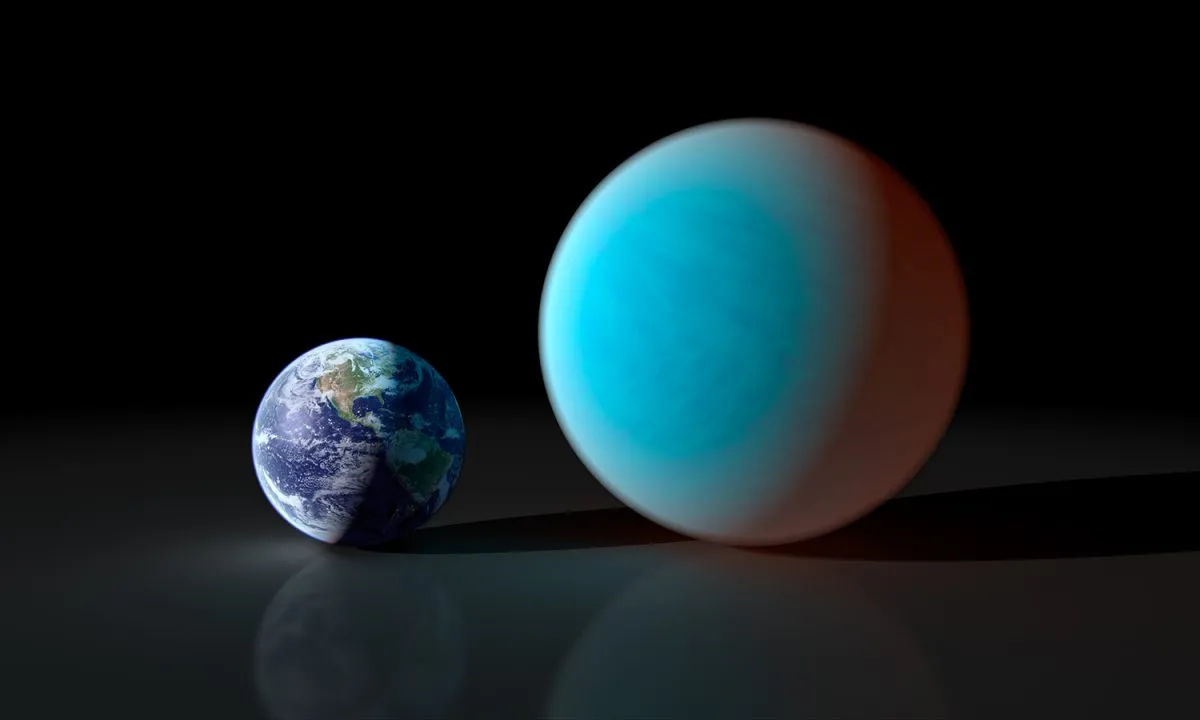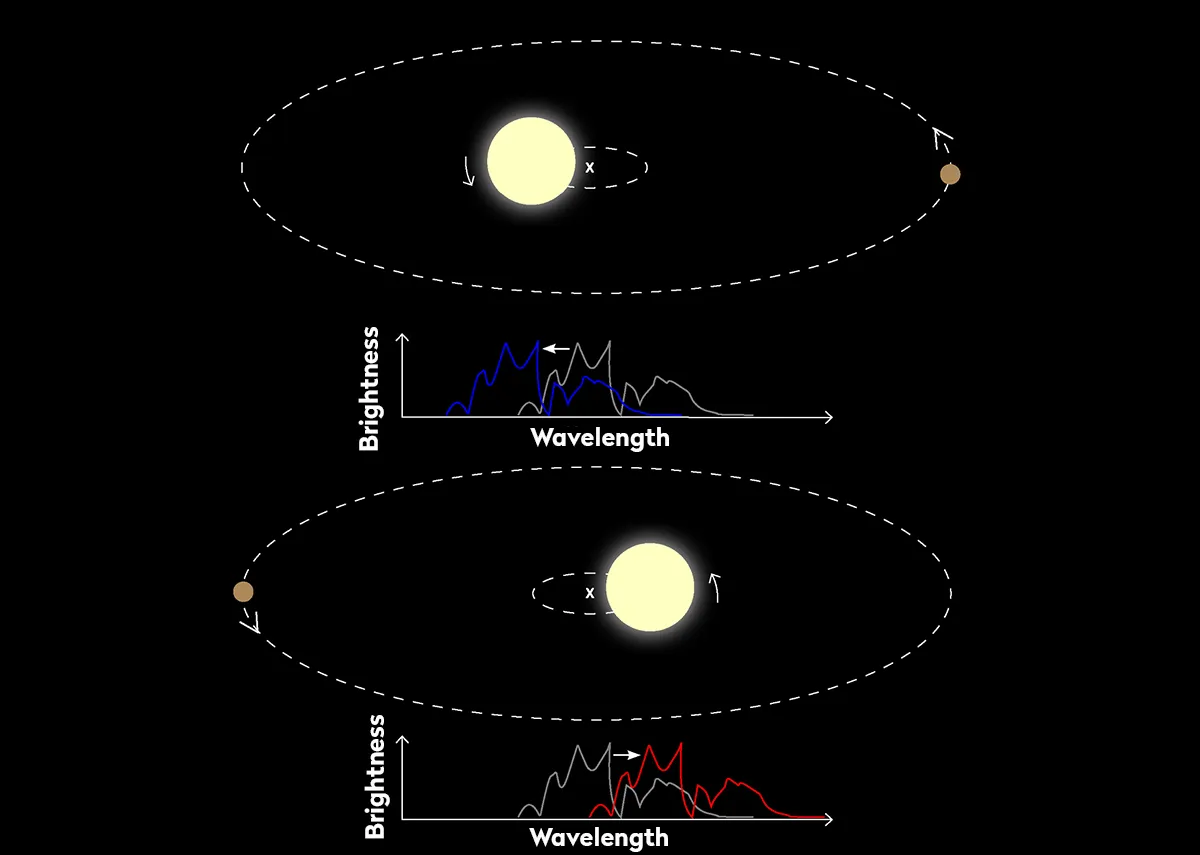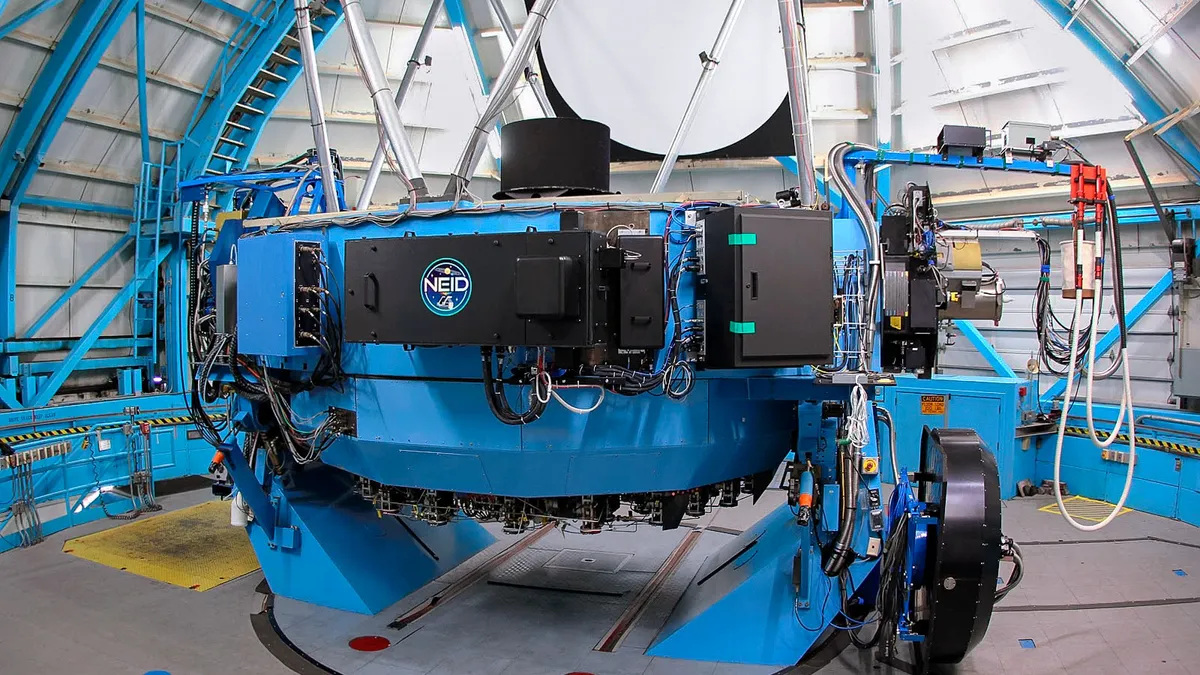There's a potentially rocky planet four times the size of Earth just a cosmic stone's throw away, that could have the right properties to host life.
This alien world is an 'exoplanet', meaning a planet orbiting a star beyond our Solar System.
More exoplanet news

It's just 20 lightyears away, which is very close in the context of the entire Galaxy,
And it may be able to host liquid water on its surface; a key requisite for the emergence of life as we know it.

A super Earth for alien life?
As astronomers have found more and more exoplanets since the first distant worlds were confirmed in the mid 1990s, they've discovered planets unlike anything we see in our Solar System.
Among these are super-Earths, which are found to be common across the Galaxy.
These rocky exoplanets are much more massive than Earth, but less massive than the ice giants of our Solar System, Uranus and Neptune.
Now, scientists have found a super-Earth, named GJ 251 c, that's just 20 lightyears away.
"We look for these types of planets because they are our best chance at finding life elsewhere,” says Suvrath Mahadevan, Professor of Astronomy at Penn State University, USA co-author on a paper about the discovery published in The Astronomical Journal.
"The exoplanet is in the habitable or the ‘Goldilocks Zone,’ the right distance from its star that liquid water could exist on its surface, if it has the right atmosphere."

How to find an Earth-like planet
On Earth, where we find life, we inevitably find water, which suggests water is a key ingredient for life as we know it.
That's why, if we want to find life beyond our Solar System, it makes sense to find rocky planets that may also have water on their surface.
Key to this is finding exoplanets that orbit their star in the Goldilocks Zone, not too close and not too far from their sun.
As a result, a lot of energy and resources have gone into developing the technology to build instruments that can help in the search.
The team say the discovery of GJ 251 c was the culmination of 20 years of observing the sky in search for Earth-like planets.
It was found using the Habitable-Zone Planet Finder instrument on the Hobby-Eberly Telescope at the McDonald Observatory in Texas.

This instrument uses a sort of prism to split apart light from a distant star and analyse it.
It employs a technique known as 'radial velocity', whereby tiny fluctuations in the star's light can indicate a planet in orbit causing that star to wobble.
The instrument was specifically built to detect Earth-like planets in the habitable zones of nearby stars.
"We call it the Habitable Zone Planet Finder, because we are looking for worlds that are at the right distance from their star that liquid water could exist on their surface. This has been the central goal of that survey," Mahadevan says.
"This discovery represents one of the best candidates in the search for atmospheric signature of life elsewhere in the next five to ten years."

How they discovered the super-Earth
The team analysed data from telescopes over the world, spanning a total of two decades.
They focussed on the wobble of the exoplanet's host star, GJ 251, caused by the orbiting planet's gravitational tug.
Baseline observations were used to improve the wobble measurements of another, already-known panet orbiting the star, known as GJ 251 b, which circles the star every 14 days.

They combined that data with new data from the the Habitable-Zone Planet Finder to reveal a second, stronger signal at 54 days.
That told them there was another, much more massive planet orbiting the star.
The planet’s signal was confirmed using the NEID spectrometer built by Penn State researchers, attached to a telescope at Kitt Peak National Observatory in Arizona.
"We are at the cutting edge of technology and analysis methods with this system," says Corey Beard, co-author on the paper.
"We need the next generation of telescopes to directly image this candidate, but what we also need is community investment."

The future for finding Earth-like worlds
The team point to the ongoing challenges in finding distant exoplanets, one of which is distinguishing information being generated by planets orbiting stars from what's going on at the star itself.
For example, starspots – like sunspots on our own Sun – can mimic the periodic motion of a planet, leading to false exoplanet detections.
But computer models can help scientists analyse how signals change across different wavelengths of light.
"This is a hard game in terms of trying to beat down stellar activity as well as measuring its subtle signals, teasing out slight signals from what is essentially this frothing, magnetospheric cauldron of a star surface," Mahadevan says.

"This discovery is a great example of the power of multi-disciplinary research at Penn State," says Eric Ford, professor of astronomy and astrophysics at Penn State.
"Mitigating stellar activity noise required not just cutting-edge instrumentation and telescope access, but also customising the data science methods for the specific needs of this star and combination of instruments.
"The combination of exquisite data and state-of-the art statistical methods enabled our interdisciplinary team to transform data into an exciting discovery that paves the way for future observatories to search for evidence of life beyond our Solar System."
"While we can’t yet confirm the presence of an atmosphere or life on GJ 251 c, the planet represents a promising target for future exploration," Mahadevan says.
"We made an exciting discovery, but there's still much more to learn about this planet."

